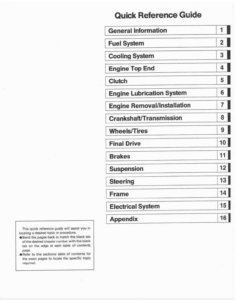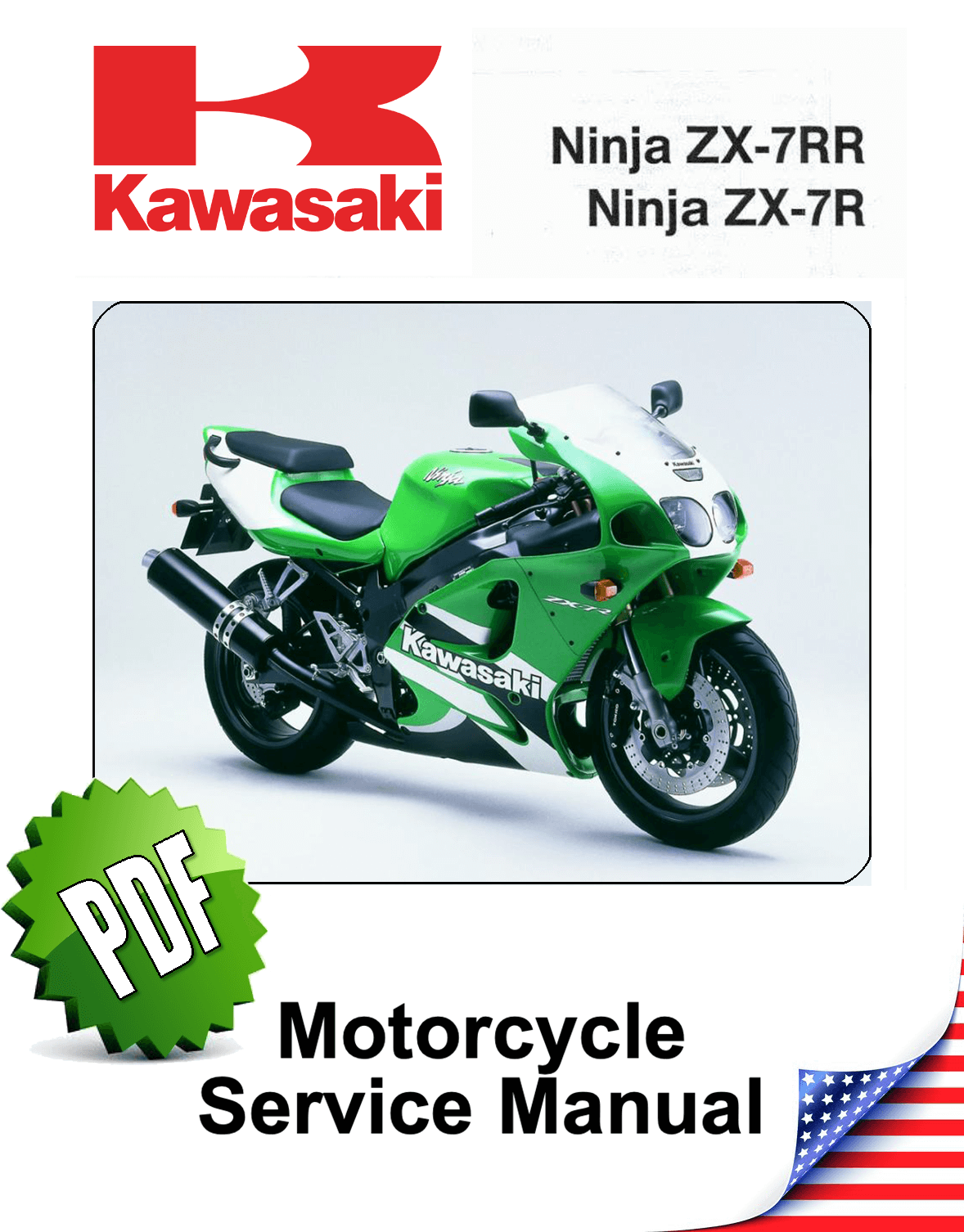Complete PDF version of the Service Manual for the Kawasaki Ninja ZX7R/ZX7RR. A MUST for every Ninja ZX7R/RR owner.
Download: Immediately after payment!
OEM Original factory workshop manual.
Models covered by this manual: 1996 to 2003
Number of pages: 364 pages
Table of contents:

This PDF repair manual can be downloaded right after the payment process in complete, on the device of your choice.
We do not offer printed manuals, for the following reasons:
- it is more eco-friendly to use a digital version
- your manual never gets dirty or greasy
- you can always choose to print the specific page(s) you need to work on your bike
- you receive your manual immediately after payment
- it is searchable

Kawasaki Ninja ZX7R
The Kawasaki Ninja ZX-7R was a motorbike of Kawasaki‘s Ninja sport bike series that was produced from 1989 to 2003. Throughout its manufacture, it remained virtually unaltered. Inverted forks were first employed by Kawasaki in 1991, followed by single tube ram air then, in 1996, twin tube ram air, Tokico six piston brakes, and fully adjustable suspension. From 1989 through 1995, Kawasaki marketed the ZXR-750 and ZXR-750R in the United States as the ZX-7 and ZX-7R, respectively. Starting in 1996, Kawasaki discontinued the ZXR moniker globally, and the old ZXR-750 was renamed ZX-7R, while the limited edition homologation special ZX-750R/ZX-7R, which debuted in 1991, was renamed ZX-7RR.
The ZX-7R is powered by a 749cc inline four-cylinder, four-stroke engine.
The ZX-7R’s frame is a lightweight aluminum twin-spar component that was created utilizing computer-aided design to maximize strength. Steel was used to build the rear subframe, which is strong enough to support a pillion passenger.
The swingarm was made using roughly the same manufacturing processes to create a hollow cast and pressed aluminum alloy hybrid swingarm, while the Uni-Trak rear suspension system is made mostly of lightweight alloy and aluminum. Under compression, the Uni-Trak system was meant to deliver progressively firmer damping and spring rate. The rear suspension unit has complete damping, preload, and compression adjustment.
The ZX-7R’s front suspension consists of a fully adjustable 8-way compression and 12-way rebound 43 mm inverted cartridge fork.
The front brakes are 320 mm semi-floating discs with six-piston Tokico calipers. The rear brakes are equipped with a 230 mm disc and a twin-piston opposed caliper.
The ZX-7RR varies from the road variant in that it has an adjustable head-stock angle, a swing arm pivot, and more adjustability. Front suspension with 28-way compression and 13-way rebound, and rear suspension with 14-way rebound, ten more than the R model, a solo cowl with a separate aluminum chassis, and 41 mm flat-slide carburetors vs 38mm on the standard R model. It also comes standard with a tight ratio gearbox, a larger crankshaft flywheel, and Nissin front brake calipers.
Cycle World reported a time of 10.82 seconds from 0 to 14 mi (0.00 to 0.40 km) at 129.68 mph (208.70 km/h).
Source: Wikipedia

